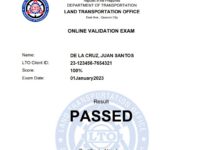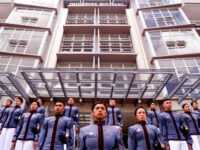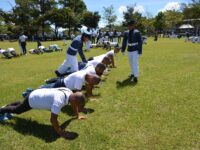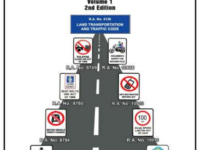- Which of the following is an unusual complication that may occur in infectious
mononucleosis?
A. Splenic infarctions
B. Dactylitis
C. Hemolytic anemia
D. Giant PLTs
Hematology/Evaluate laboratory data to recognize health and disease states/Infectious
mononucleosis/2 - In a patient with HIV infection, one should expect to see:
A. Shift to the left in WBCs
B. Target cells
C. Reactive lymphocytes
D. Pelgeroid cells
Hematology/Evaluate laboratory data to recognize health and disease
states/HIV/Microscopic morphology/1 - Which inclusions may be seen in leukocytes?
A. Döhle bodies
B. Basophilic stippling
C. Malarial parasites
D. Howell–Jolly bodies
Hematology/Apply knowledge of fundamental characteristics/WBC inclusions/1 - Which of the following is contained in the primary granules of the neutrophil?
A. Lactoferrin
B. Myeloperoxidase
C. Histamine
D. Alkaline phosphatase
Hematology/Apply knowledge of fundamental biological characteristics/WBC kinetics/2 - What is the typical reference range for relative lymphocyte percentage in the peripheral
blood smear from a 1-year-old child?
A. 1%–6%
B. 27%–33%
C. 35%–58%
D. 50%–70%
Hematology/Evaluate laboratory data to recognize health and disease states/Differential
normal values/2 - Qualitative and quantitative neutrophil changes noted in response to infection include
all of the following except:
A. Neutrophilia
B. Pelgeroid hyposegmentation
C. Toxic granulation
D. Vacuolization
Hematology/Apply knowledge of fundamental biological characteristics/WBC microscopic
morphology/2 - Neutropenia is present in patients with which absolute neutrophil count?
A. Less than 1.5 × 109/L
B. Less than 5.0 × 109/L
C. Less than 10.0 × 109/L
D. Less than 15.0 × 109/L
Hematology/Evaluate laboratory data to recognize health and disease states/Differential
normal values/2 - The morphological characteristic(s) associated with Chédiak–Higashi syndrome is (are):
A. Pale blue cytoplasmic inclusions
B. Giant lysosomal granules
C. Small, dark-staining granules and condensed nuclei
D. Nuclear hyposegmentation
Hematology/Recognize morphological changes associated with diseases/WBC inclusions/2 - The familial condition of Pelger–Huët anomaly is important to recognize because this
disorder must be differentiated from:
A. Infectious mononucleosis
B. May–Hegglin anomaly
C. A shift-to-the-left increase in immature granulocytes
D. G6PD deficiency
Hematology/Recognize morphological changes associated with diseases/WBC inclusions/2 - SITUATION: A differential shows reactive lymphocytes, and the physician suspects
that a viral infection is the cause. What is the expected laboratory finding in a patient
with a cytomegalovirus (CMV) infection?
A. Heterophile antibody: positive
B. Epstein–Barr virus (EBV)–immunoglobulin M (IgM): positive
C. Direct antiglobulin test (DAT): positive
D. CMV–IgM: positive
Hematology/Evaluate laboratory data to recognize health and disease states/Differentials/2 - Neutrophil phagocytosis and particle ingestion are associated with an increase in O2
utilization called respiratory burst. What are the two most important products of this
biochemical reaction?
A. Hydrogen peroxide (H2O2) and superoxide anion (O2–)
B. Lactoferrin and NADPH oxidase
C. Cytochrome b and collagenase
D. Alkaline phosphatase and ascorbic acid
Hematology/Apply knowledge of fundamental biological characteristics/WBC kinetics/2 - Which of the morphological findings are characteristic of reactive lymphocytes?
A. High nuclear:cytoplasmic (N:C) ratio
B. Prominent nucleoli
C. Basophilic cytoplasm
D. All of these options
Hematology/Recognize morphological changes associated with diseases/WBC morphology/2
Answers key
- C Occasionally patients with infectious mononucleosis develop a potent cold agglutinin
with anti-I specificity. This cold autoantibody can cause strong hemolysis and
hemolytic anemia. - C HIV infection brings about several hematological abnormalities seen on peripheral
blood smear examination; most patients demonstrate reactive lymphocytes and have
granulocytopenia. - A Döhle bodies are RNA-rich areas within polymorphonuclear neutrophils (PMNs) that
are oval and light blue. Although often associated with infectious states, they are seen
in a wide range of conditions and toxic reactions, including hemolytic and pernicious
anemias, chronic granulocytic leukemia, and therapy with antineoplastic drugs. The
other inclusions are associated with erythrocytes. - B Myeloperoxidase, lysozyme, and acid phosphatase are enzymes that are contained in
the primary granules of neutrophils. The contents of secondary and tertiary granules
include lactoferrin, collagenase, NADPH oxidase, and alkaline phosphatase. - D The mean relative lymphocyte percentage for a 1-year-old child is 61% compared with
the mean lymphocyte percentage of 35% in an adult. - B Neutrophil changes associated with infection may include neutrophilia, shift to the left,
toxic granulation, Döhle bodies, and vacuolization. Pelgeroid hyposegmentation is
noted in neutrophils from individuals with congenital Pelger–Huët anomaly and those
with an acquired anomaly induced by drug ingestion or secondary to certain
conditions, such as leukemia. - A Neutropenia is defined as an absolute decrease in the number of circulating
neutrophils. This condition is present in patients having neutrophil counts of less than
1.5 × 109/L. - B Chédiak–Higashi syndrome is a disorder of neutrophil phagocytic dysfunction caused
by depressed chemotaxis and delayed degranulation. The degranulation disturbance is
attributed to interference from the giant lysosomal granules characteristic of this
disorder. - C Pelger–Huët anomaly is a benign familial condition reported in 1 out of 6,000
individuals. Care must be taken to differentiate Pelger–Huët cells from the numerous
band neutrophils and metamyelocytes that may be observed during severe infection or
a shift-to-the-left of immaturity in granulocyte stages. - D If both the heterophile antibody test and the EBV-IgM tests yield negative results in a
patient with reactive lymphocytosis and a suspected viral infection, serum should be
analyzed for IgM antibodies to CMV. CMV belongs to the herpes virus family and is
endemic worldwide. CMV infection is the most common cause of heterophile-negative
infectious mononucleosis. - A The biochemical products of the respiratory burst involved in neutrophil particle
ingestion during phagocytosis are H2O2 and O2–. The activated neutrophil discharges
the enzyme NADPH oxidase into the phagolysosome, where it converts O2 to O2–,
which is then reduced to H2O2. - D Both reactive lymphocytes and blasts may have basophilic cytoplasm, a high N:C
ratio, and the presence of prominent nucleoli. Blasts, however, have an extremely fine
nuclear chromatin staining pattern as viewed on a Wright– and Giemsa–stained smear.









0 Comments